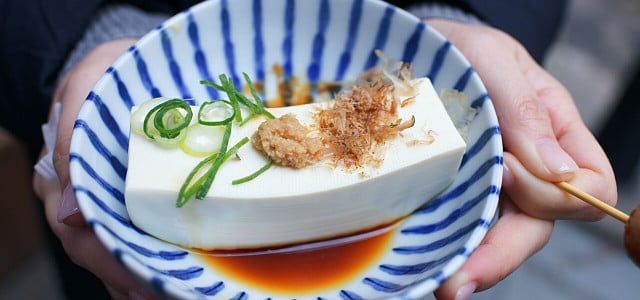Have you ever wondered how the humble soybean becomes a block of tofu? Wonder no more! We'll discuss how tofu is made, from bean to block.
Tofu is made from processed soybeans and is a fantastic source of nutrients, such as protein, carbohydrates, vitamins and fat (find out more about tofu health benefits here). It is eaten regularly across East and Southeast Asia and can be cooked in various ways such as fried, baked, deep fried or blended into a cheese substitute. Tofu is a great protein source for vegans and vegetarians, and you only need soybeans, water and a coagulant to make it.
Tofu has a mild taste, but when cooked, it absorbs flavors and marinades well. There are a few types of tofu, such as:
- Firm tofu — This is most commonly available in supermarkets and is pressed to remove excess water. It is best for frying in individual chunks, like with stinky tofu.
- Regular tofu — It is softer than firm tofu and can be used as a spread or to make vegan scrambled “eggs”.
- Silken tofu — Used primarily in desserts, silken tofu has the highest water content and is very soft and breakable.
This article will focus on how tofu is made on a large scale, commercial level, for example, by Pulmone, which has the largest share of the US tofu market. However, there are more traditional ways to make tofu, such as the methods used by Ota Tofu, in Portland, which has been making tofu for over 100 years.
If you’ve ever wondered how soybeans transform into tofu, learn how tofu is made here.
1. The Soybeans Are Soaked
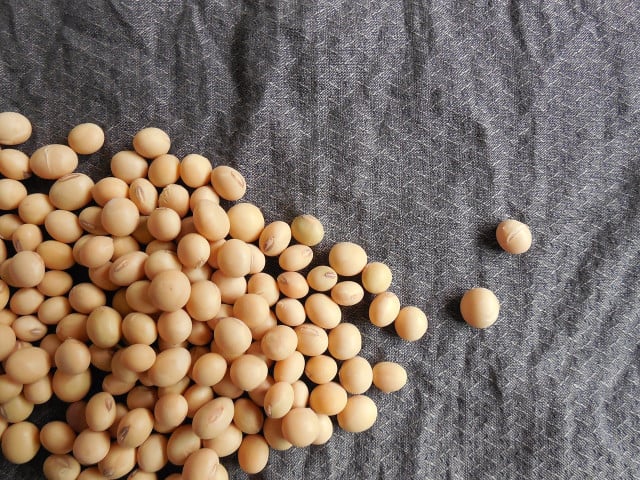
(Foto: CC0 / Pixabay / Jing)
The first step in making tofu is to soak the soybeans. Dry soybeans are put in large containers and soaked in water for four to fourteen hours, depending on the number of soybeans and the water temperature. This makes them double in size as they absorb the water. Some manufacturers may grind the soybeans before soaking or include additives to make the finished product smoother or balance the flavor.
2. The Soaked Soybeans Are Mashed
There are two options for mashing. Traditionally, soybeans were ground using manual grinding stones called querns. However, nowadays, machines are usually used to mash a larger amount of soybeans. After mashing, the remaining slurry is boiled at 212-230℉ for 3-10 minutes, which neutralizes an enzyme that can affect digestion and removes the soy’s “bean” taste.
3. Soy Milk Is Extracted
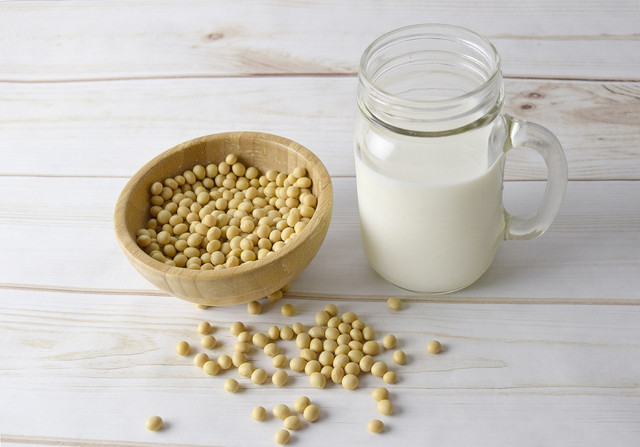


(Foto: CC0 / Pixabay / bigfatcat)
After boiling and mashing, the soy slurry is put through a roller press to separate the milk from the pulp — or okara in Japanese. Okara consists of the hulls and remaining solid parts from the soybeans. Although it is considered a byproduct and is therefore only given to livestock, it has some health benefits: it is high in fiber, starch and protein. Once the separation is complete, we can move on to the next step in the process of how tofu is made: coagulation, which forms the block
4. The Soy Milk is Coagulated
The soy milk is placed into vats and curdled in the same way that dairy milk is curdled to make cheese. This is done by separating the curds, or solid parts, from the whey, the liquid parts. A coagulant is added to begin the process, such as nigari (a salt from seawater), calcium sulfate (another salt coagulant), or by using other acids or enzymes. This alters the pH and makes the curds solidify and form, separating from the whey.
5. The Curds Are Pressed to Remove the Whey
Now the curds or solid parts of the soy milk need to be pressed to make solid tofu, draining away the liquid whey. The curds are put into block molds or trays to form a shape (like a Jello mold). They are then pressed to solidify them and remove the excess liquid. Traditionally this is done using a hand-turned screw or lever press, but on the industrial scale, this is done using a hydraulic press.
The press squeezes out the whey, and the remaining curds become the tofu that we know. The tofu blocks are made by cutting the pressed curds into half-kilo portions. They are then rinsed and stored, where they will firm up before they are packaged.
6. The Tofu Is Ready to Be Packaged
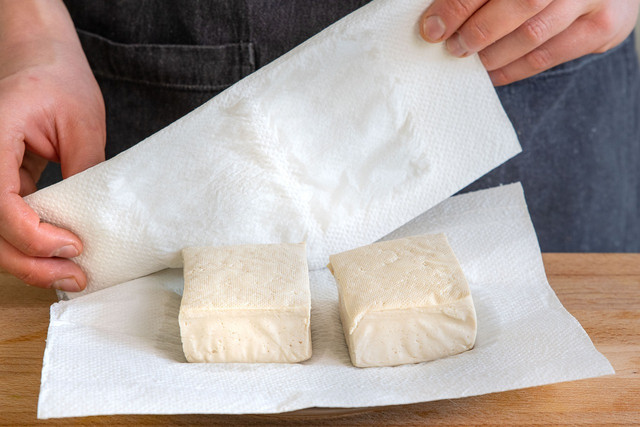


(Foto: CC0 / Pixabay / eatde)
Now the tofu is ready to be packaged and sold. On an industrial scale, it is packaged and shrink-wrapped in small blocks, then sealed, weighed and dated. It is then warmed to 176℉ to extend the shelf life, which is done by moving the tofu through hot water, killing any harmful bacteria, a method called pasteurization. Or, on a smaller scale, it is cut into small pieces and loosely wrapped in plastic or placed in plastic bags (unpasteurized), which means it must be consumed in a few days.
Is Tofu Sustainable?
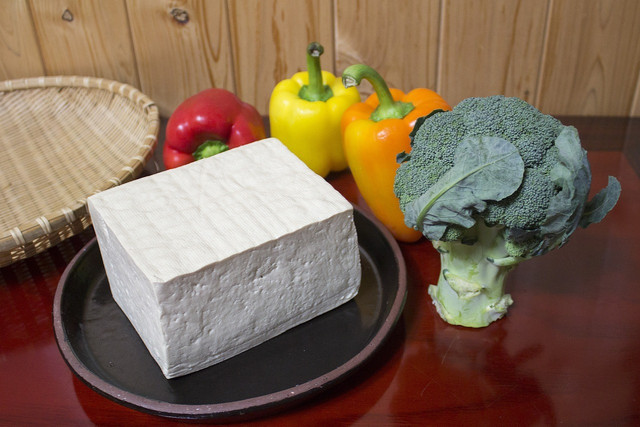


(Foto: CC0 / Pixabay / 621hjmit)
Now that you know how tofu is made, let’s find out whether it’s sustainable. Soybean farming has several negative effects on the environment. The WWF states that without “proper safeguards” the soybean industry “is causing widespread deforestation and displacement of small farmers and Indigenous peoples around the globe”.
That’s because soy crops are often grown continuously in a monoculture — when only one crop type is farmed in an area. This is bad for the environment as it can create pest outbreaks and deplete soil fertility, leading to soil degradation. It can also cause a reduction in biodiversity, which means there is less species variety in the area.
However, it’s important to note that the majority of soy consumed on the planet is actually made into a protein-rich soy meal for livestock consumption. Only around seven percent of globally produced soya is consumed by humans. Sustainable sources are available, like those certified by the Roundtable on Responsible Soy. Alternatively, choose soy grown in the US.
It’s difficult for the consumer to know what feed livestock was fed, making this another reason to avoid meat and dairy.
Read more:
- Can You Eat Tofu Raw? Yes — Here’s How
- How to Press Tofu Step-by-Step for Easier Cooking
- Freezing Tofu Instantly Levels Up Your Cooking — Here’s How (4 Tips & Tricks)
Do you like this post?






